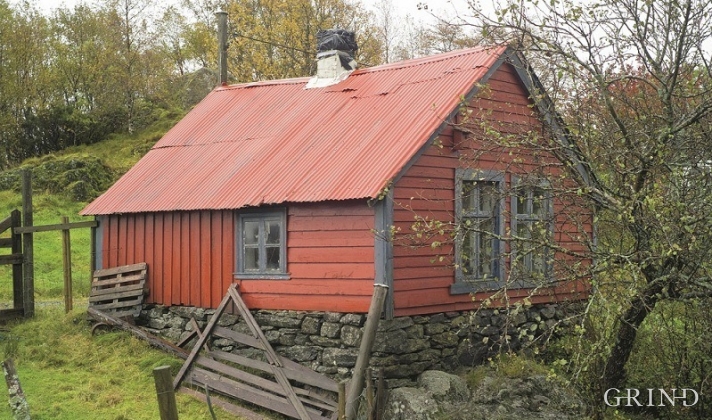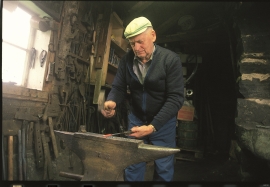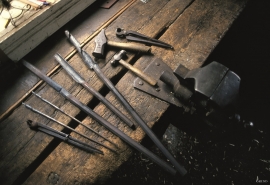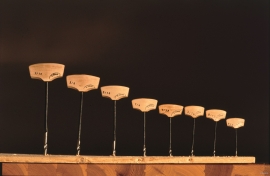The forging of an auger starts off with the thinning out of the raw material. After that comes the hollowing out of the drilling bit, the forging of the bit, the twisting of the bit with tongs and the forging out into the final shape. Then the tongs are forged to a needle sharp point. Now the drill has to be ground. After the grinding the drill is hardened and tempered. The drill bit is lightly polished on the outside and the inside to get it shiny again after the hardening and tempering. Then the drill is filed so as to get a sharp edge. Finally a birch wood shaft is fitted. The shaft was burnt in by the hot pliers being pushed through the shaft.
Published: 15.02.2013 | Author: Nils Georg Brekke, Edvin Odland, Johs. Fosse, Atle Ove Martinussen
The smithy at Odland. (Svein Nord)
The auger smithies in Odland and Fosse were amongst those which had the largest production of augers in the period between the Wars. Martinus Fosse built a smithy in 1877, and this was in operation right up to the 1980s - one of the centres for auger production in Meland. In 1930 yet another smithy was built here. There was a smithy at Fossesjøen as early at the 18th century, and at the end of the 19th century they went over to auger smithing. There is still a market for hand-forged augers.
- Rifsgard, N. (1987) Navarsmedane i Austebygda i Meland. I: Frå Fjon til Fusa: årbok for Nord- og Midthordland sogelag. Bergen, Sogelaget, s. 105-124.






